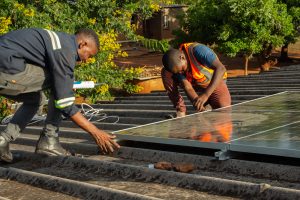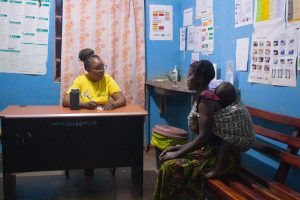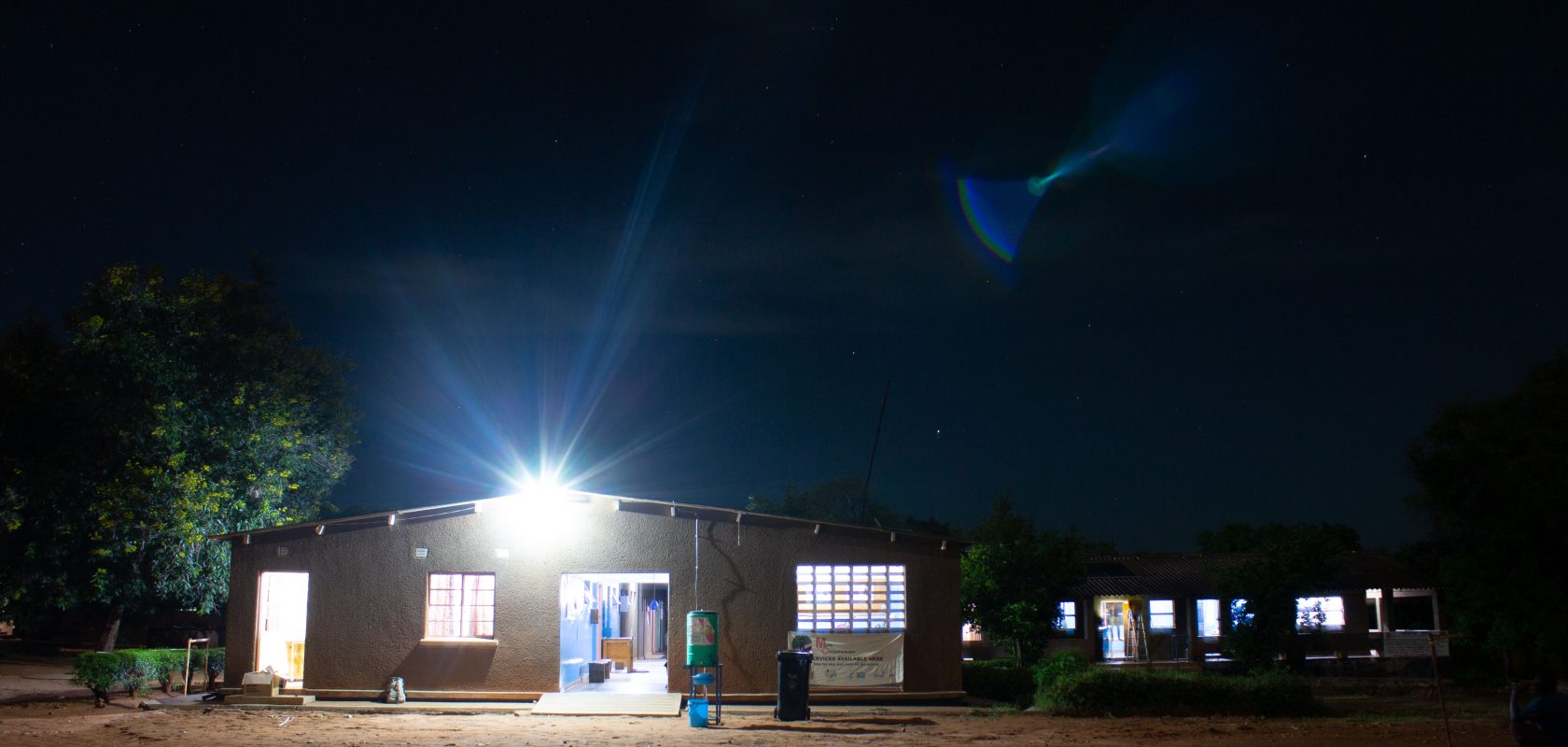Across sub-Saharan Africa, people are denied access to modern healthcare and face unnecessary risk when visiting healthcare facilities. 60% of healthcare facilities lack reliable access to electricity, with 15% lacking access completely.
While PV solar systems offer a solution which can be rapidly deployed providing much needed light and power to rural health facilities, there is a long history of these systems failing prematurely. With limited access to funding, spare parts and technical knowledge required to ensure that systems remain operational, many traditional donor approaches fail to adequately plan for the long term maintenance of these systems.

Solar panels are installed on Hofmeyr Zonal Rural Health Centre in Zambia. Photo: Thomas Nyangulu Jr/SolarAid.
Another challenge is ownership and responsibility. In 2022, SolarAid, together with Mzuzu University in Malawi conducted research which found that over 87% of the health facilities surveyed had a non or sub-functioning solar system. This is a familiar story across sub-Saharan Africa.
Testing an Energy-as-a-Service approach
At SolarAid, we are currently exploring Energy-as-a-Service (EaaS) models in pilot locations in Malawi, Zambia and also together with partners in Madagascar. Similar to our Light a Village programme, clinics make monthly service fee payments to the solar provider, so long as the system remains operational, delivering the agreed levels of service. This approach is designed to ensure that solar systems remain fully operational at all times by installing them with remote monitoring capacity, enabling us to ensure that systems remain operational, even when we are not on site.
Through applying an Energy-as-a-Service model, we ensure sustainability and avoid the ‘business as usual’ donor-approach with solar systems being donated without long-term planning, risking them falling into premature disrepair. It ensures that the systems continue to provide health facilities with access to electricity for a minimum of 10 years, allowing us to demonstrate the positive impact that fully operational solar systems have on the range and quality of healthcare services and patient and healthcare worker satisfaction. This in turn could make the case for Governments, Health and Energy Ministries to budget for service fee payments to enable rural health facilities to benefit from access to reliable electricity.
Together with WWF Zambia, SolarAid recently carried out a solar installation which trials Energy-as-a-Service on Hofmeyr Zonal Rural Health Centre in Zambia – a clinic located about 335 kilometres from Lusaka.

Staff at Hofmeyr Zonal Rural Health Centre in Zambia meet with patients by solar light in the evening. Photo: Thomas Nyangulu Jr/SolarAid.
Fred Mwale, Programmes Manager at SolarAid Zambia said, “One of the things the Energy-as-a-Service model allows us to do is to employ remote monitoring of the system. Through GSM remote monitoring, we are going to be able to see where the system is at. At any point in time, we’ll be able to monitor the usage. We’ll also be able to monitor what state it’s in and if there’s any challenge that system is facing. We will also be able to see if the system is offline or has been stolen.”
Recognizing that too many solar systems installed on rural health facilities fall into disrepair, SolarAid is calling for long term sustainability to be built into the design of projects powering healthcare from the outset. To ensure modern, safe and sustainable healthcare for all, organisations must commit to project design which ensures systems remain operational for at least 10 years.
Want to learn more about EaaS as a solution to longevity and sustainability in powering rural healthcare? Programmes Manager Fred Mwale explains in this video.
